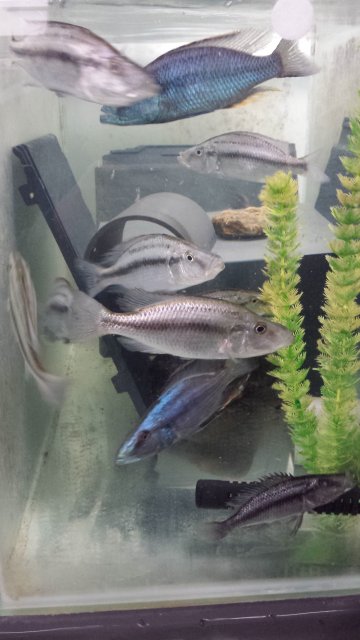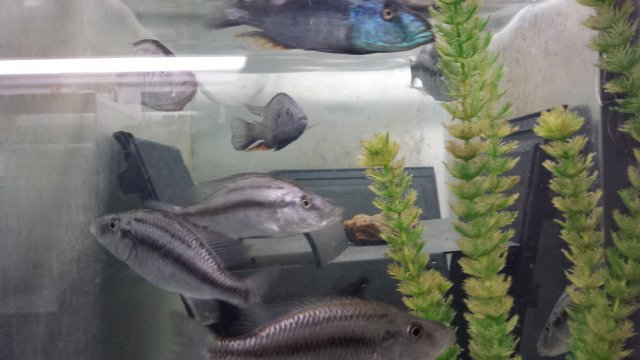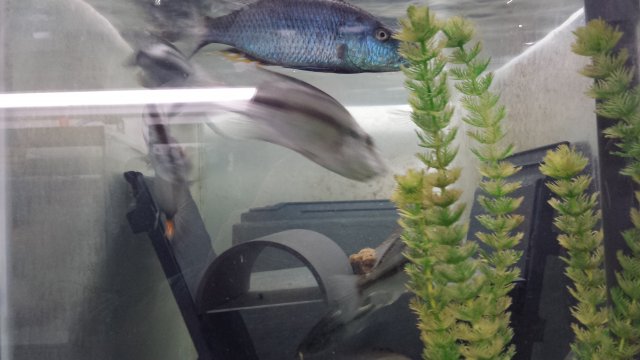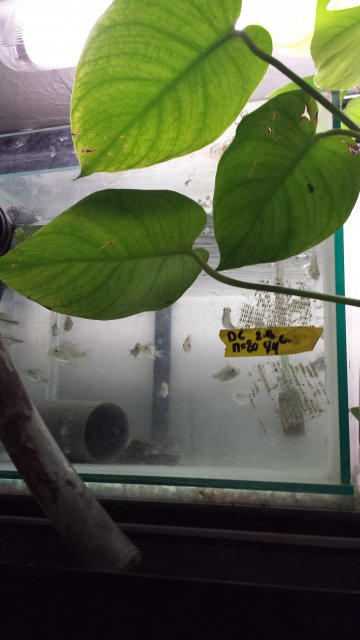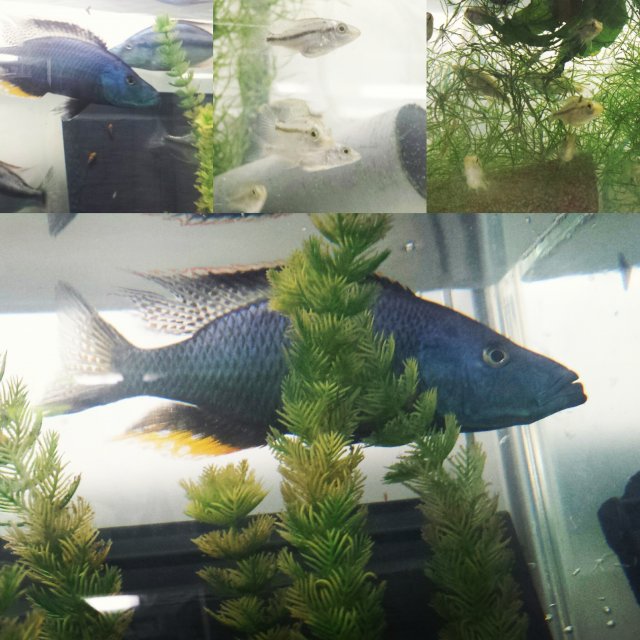Procrastinating/taking a break from staring at my stats program and clearing my head. . .
I'm finally down to the point where I can actually look at some of the data I have been collecting since April on my new batches of babies. Project Two has one main question: Does the maternal environment effect shoaling cohesion of juvenile D. compressiceps?
In other words, if you take the babies away from mom and raise them in an environment where they are not only not in the presence of their mother, but not as in close contact with siblings during development will juveniles stick closer together in a new environment and after a startle than those that were left to be raised by the mother?
So, I have groups of four, because this is such a short study I was unable to increase group sizes and determine the effects as group size increased, and I placed them into an environment they had never seen before and I recorded them for three minutes. I then took the video and used a free program from Cal Tech called "Ctrax" that (somewhat decently) tracked the individuals over the course of initial exploration. Every 20 seconds I produced a still frame from the video and measured the distances between the fish. The best part is that I was able to keep track of each individual over time and will be able to determine if a specific fish was a leader, a follower, bold, shy, motivated or unmotivated. I can also get a size for the fish and use that size to determine if larger individuals tend to fall into different categories. However, the deadline is soon and I will not be able to do that at this time (my supervisor said to leave it for the PhD). I used another free program called "ImageJ" to measure the distances between fish in mm. For now I have 160 images like the one below, each with distances between fish. I used these measurements to determine shoaling cohesion and compare them within between groups, treatments, and families all in one messy line of code in another free program called "r."
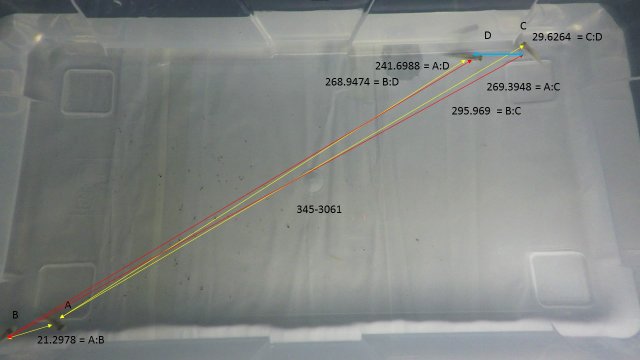
I just ran the stats and it looks like I have the following (assuming I have done them correct):
- Family effects the distances: female A produced individuals that shoaled tighter than female B
- The treatment effected families differently: Individuals produced by female A showed a greater decrease in shoaling tightness when removed from the maternal environment than the individuals produced by female B
You can see this in the graph below that I have dubbed "my ridiculous boxplot that I will use for nothing except to say 'look what I wasted an hour on!'"
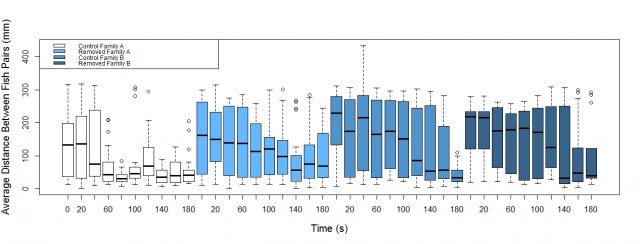
The takeaway: basically, the environment created by the mother through the act of mouthbrooding causes individuals to form tighter shoals than individuals that are raised in an artificial environment as suggested by the data. Previous studies suggest that juveniles shoal to avoid predation. It could be said that the maternal environment is helping to produce individuals that will experience lower predation rates in their lifetime and have greater overall fitness due to survival. This helps to explain the advantages of mouthbrooding that may help to overcome the energetic costs and allowed the behavior to evolve. An additional effect however, could have been on the developmental stage. It has been suggested that shoaling behavior develops as the lateral line develops and while my fish were all 30 days of age, the removed groups develop much slower than the control and only had their yolk absorbed for about a week before this trial, while the control had been released from the mother (yolk free) about two weeks before the trial. It is something that could be interesting to track as the fish age and determine if their is an age where the behaviors become equal, or if the removed will follow the behavior of the control in a developmental pattern.
Essentially, if you raise mouth brooding cichlids you will have better developed offspring that are more likely to exhibit natural behaviors if you allow the females to raise the young rather than removing and replacing them in egg tumblers.
Alright, I'm back to work now. Thanks for reading and even if you don't I got a good half hour of procrastination and some ideas for my discussion out of this.
~Tiff
I'm finally down to the point where I can actually look at some of the data I have been collecting since April on my new batches of babies. Project Two has one main question: Does the maternal environment effect shoaling cohesion of juvenile D. compressiceps?
In other words, if you take the babies away from mom and raise them in an environment where they are not only not in the presence of their mother, but not as in close contact with siblings during development will juveniles stick closer together in a new environment and after a startle than those that were left to be raised by the mother?
So, I have groups of four, because this is such a short study I was unable to increase group sizes and determine the effects as group size increased, and I placed them into an environment they had never seen before and I recorded them for three minutes. I then took the video and used a free program from Cal Tech called "Ctrax" that (somewhat decently) tracked the individuals over the course of initial exploration. Every 20 seconds I produced a still frame from the video and measured the distances between the fish. The best part is that I was able to keep track of each individual over time and will be able to determine if a specific fish was a leader, a follower, bold, shy, motivated or unmotivated. I can also get a size for the fish and use that size to determine if larger individuals tend to fall into different categories. However, the deadline is soon and I will not be able to do that at this time (my supervisor said to leave it for the PhD). I used another free program called "ImageJ" to measure the distances between fish in mm. For now I have 160 images like the one below, each with distances between fish. I used these measurements to determine shoaling cohesion and compare them within between groups, treatments, and families all in one messy line of code in another free program called "r."

I just ran the stats and it looks like I have the following (assuming I have done them correct):
- Family effects the distances: female A produced individuals that shoaled tighter than female B
- The treatment effected families differently: Individuals produced by female A showed a greater decrease in shoaling tightness when removed from the maternal environment than the individuals produced by female B
You can see this in the graph below that I have dubbed "my ridiculous boxplot that I will use for nothing except to say 'look what I wasted an hour on!'"

The takeaway: basically, the environment created by the mother through the act of mouthbrooding causes individuals to form tighter shoals than individuals that are raised in an artificial environment as suggested by the data. Previous studies suggest that juveniles shoal to avoid predation. It could be said that the maternal environment is helping to produce individuals that will experience lower predation rates in their lifetime and have greater overall fitness due to survival. This helps to explain the advantages of mouthbrooding that may help to overcome the energetic costs and allowed the behavior to evolve. An additional effect however, could have been on the developmental stage. It has been suggested that shoaling behavior develops as the lateral line develops and while my fish were all 30 days of age, the removed groups develop much slower than the control and only had their yolk absorbed for about a week before this trial, while the control had been released from the mother (yolk free) about two weeks before the trial. It is something that could be interesting to track as the fish age and determine if their is an age where the behaviors become equal, or if the removed will follow the behavior of the control in a developmental pattern.
Essentially, if you raise mouth brooding cichlids you will have better developed offspring that are more likely to exhibit natural behaviors if you allow the females to raise the young rather than removing and replacing them in egg tumblers.
Alright, I'm back to work now. Thanks for reading and even if you don't I got a good half hour of procrastination and some ideas for my discussion out of this.
~Tiff


